Get Lost in Sabratha's Theatre
Situated on Libya's Mediterranean coast, the historic city of Sabratha and its Roman theatre have outlasted numerous civilizations, bearing witness to centuries of change.
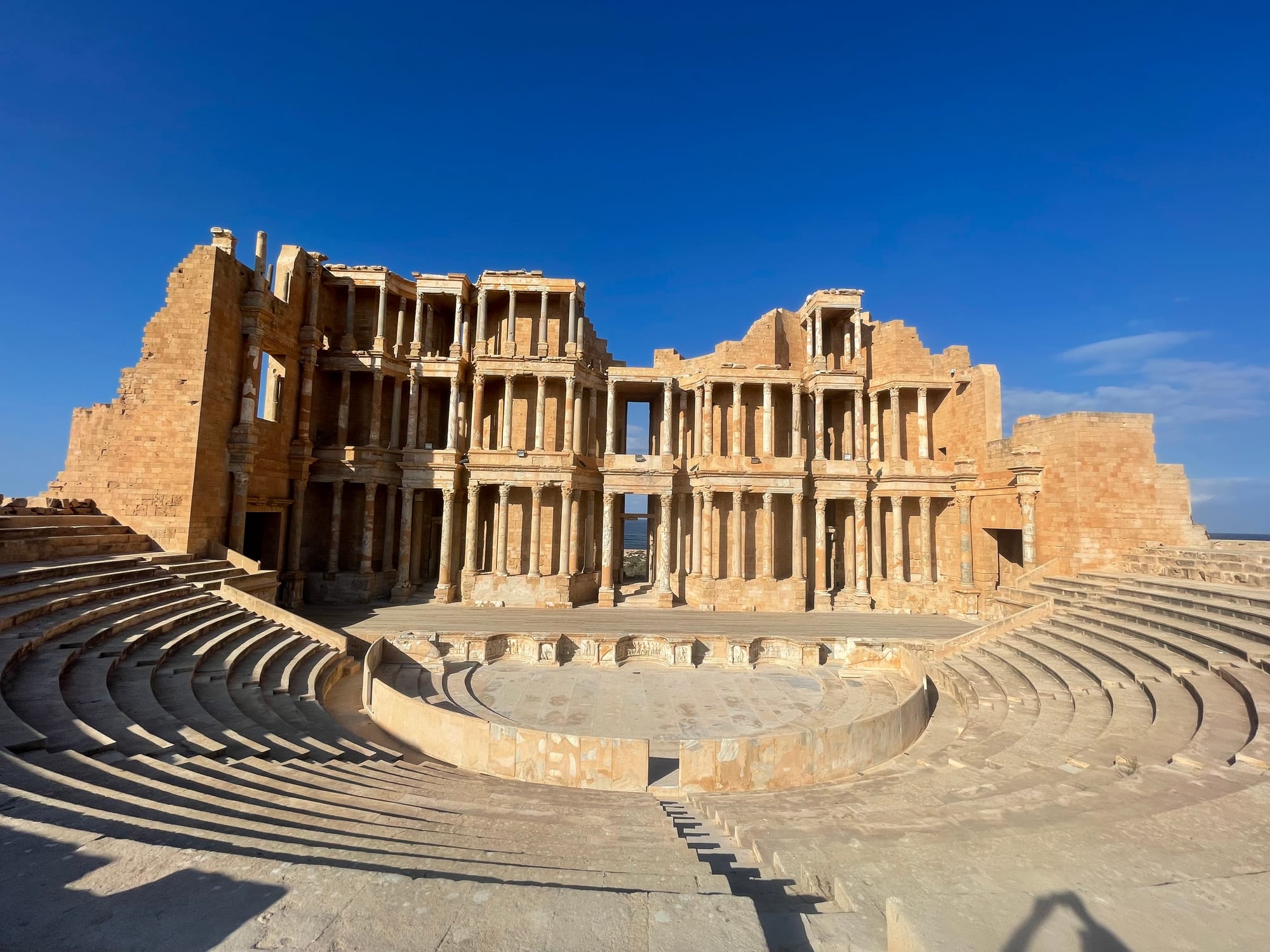
SABRATHA-A World Heritage site since 1982, The Roman Theatre is around 1862 years old. With a clear sky and the warm sun, the theater is able to show it’s brilliance and historical events it has witnessed.
We take you into an overlooked extraordinary archaeological Roman Theatre site. Libya’s shared cultural heritage which has all the potential to become an important driver for sustainable development.
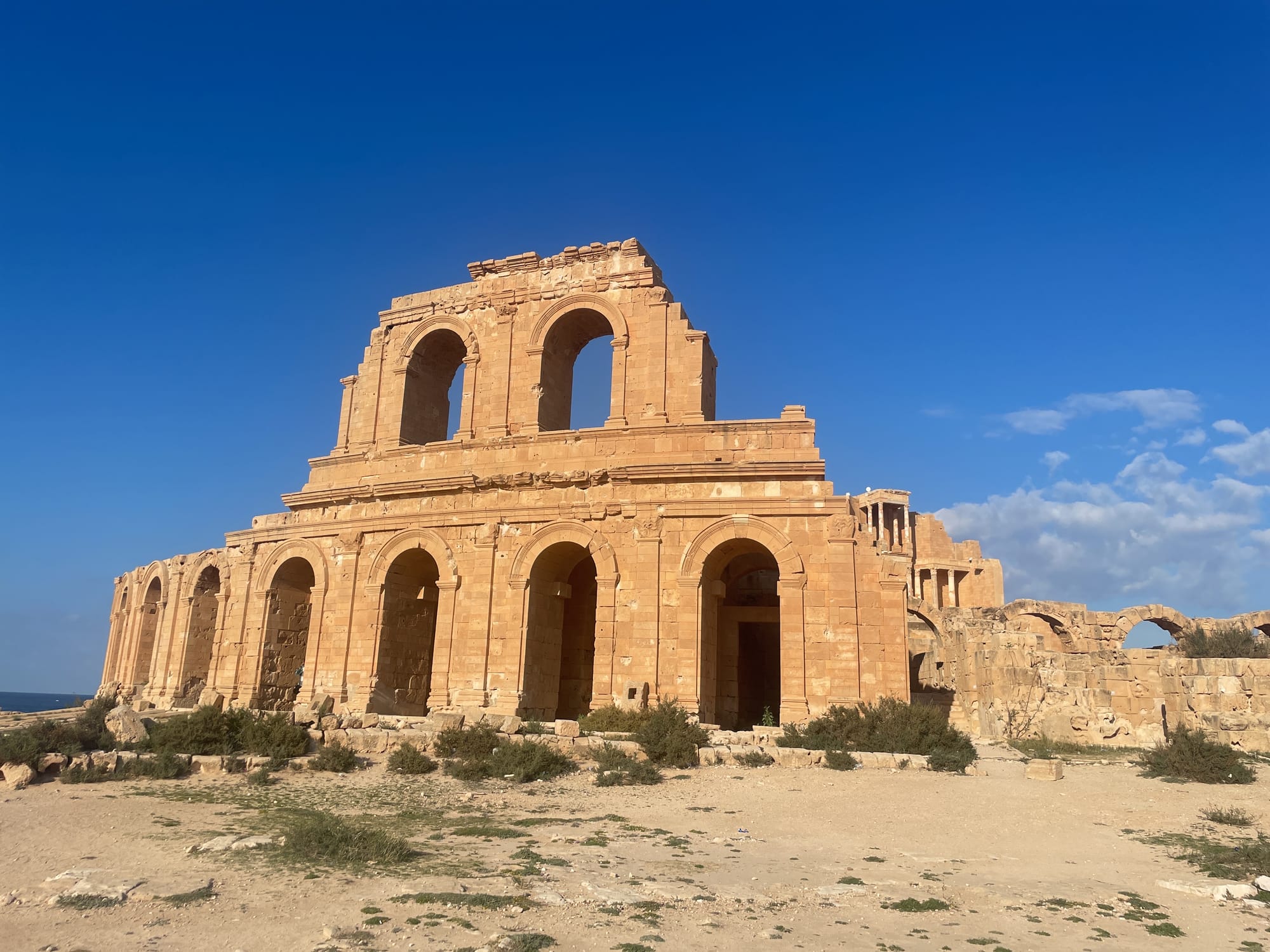
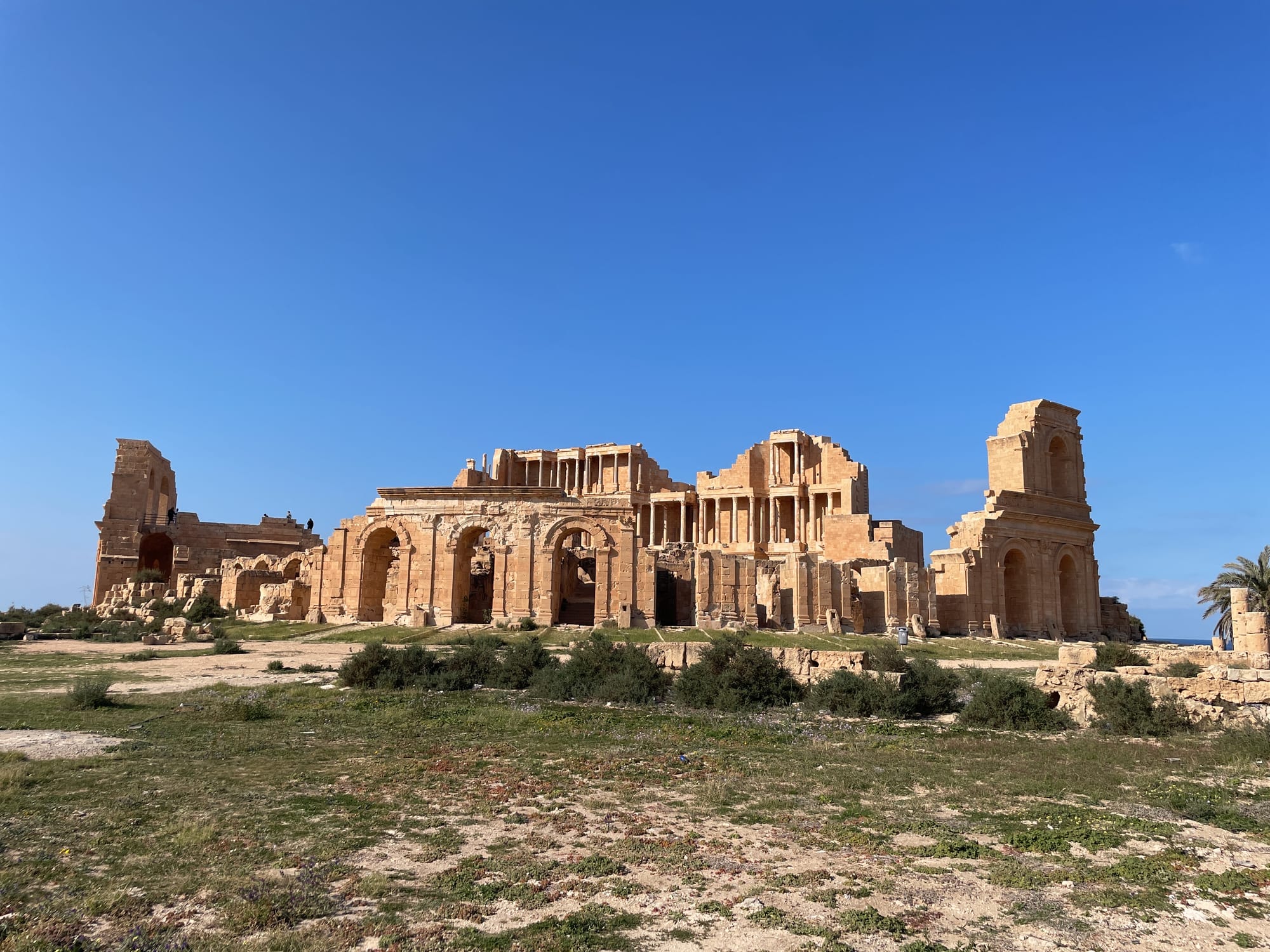
Experts have different hypotheses about when the theater was built, based on archaeological findings and historical records. One theory is that the theater at Sabratha was started by Emperor Marcus Aurelius (emperor AD 161–180), continued by his son Commodus, and completed with a lavish proscenium by Emperor Septimius Severus (emperor AD 193–211). Photo by Radi Dhan
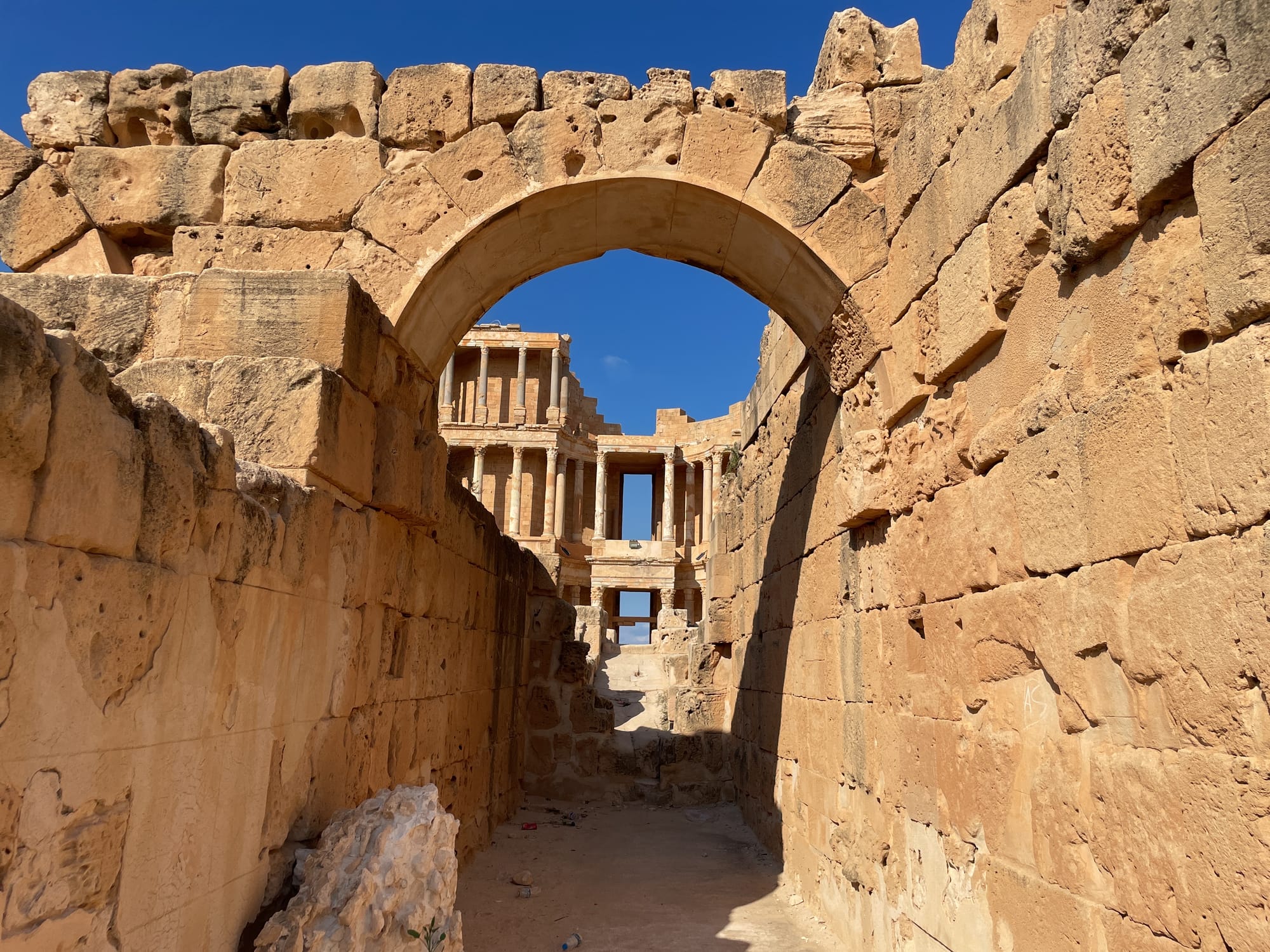
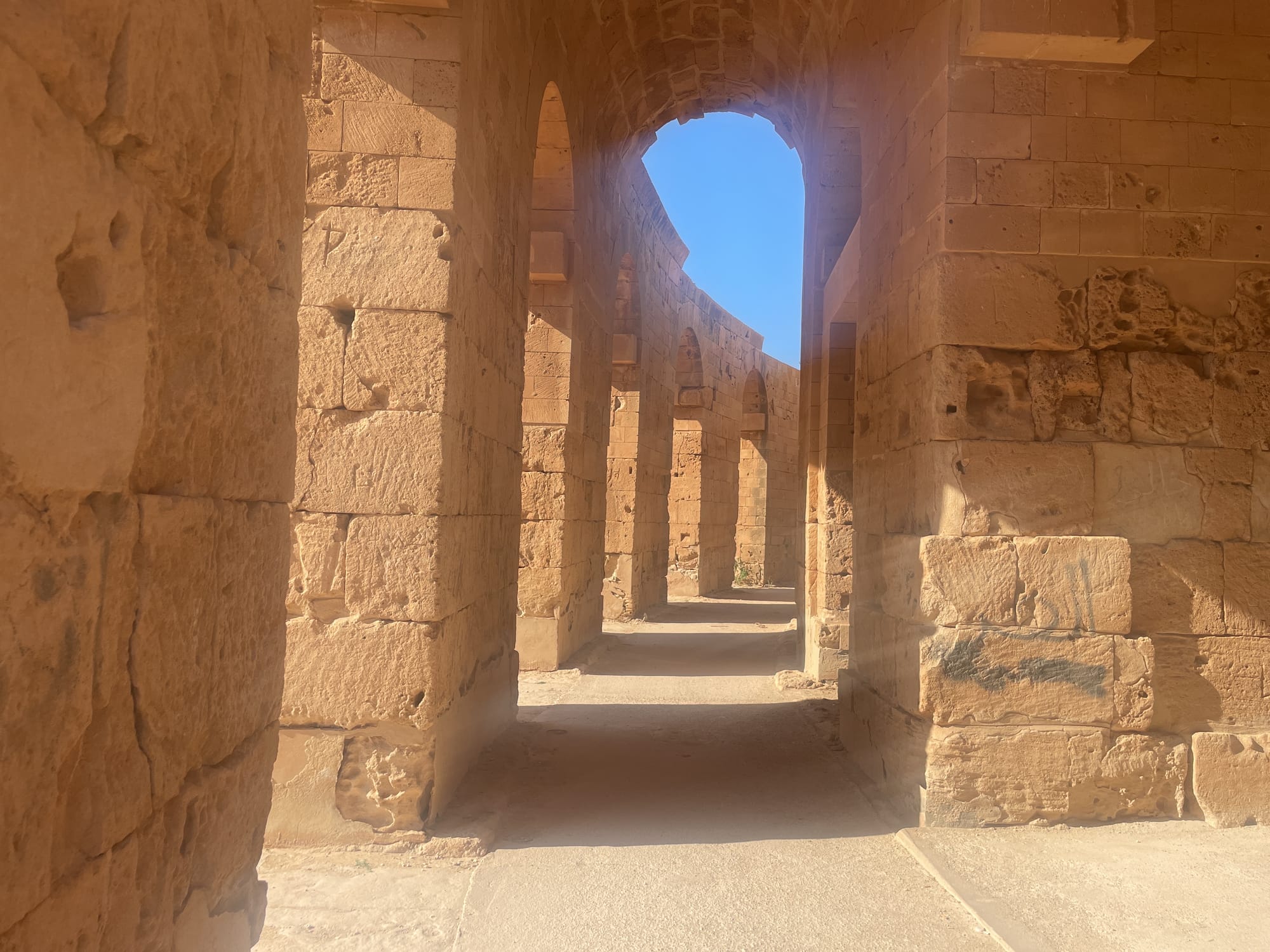
Sabratha, Libya - 01/31/2024 Photo by Radi Dhan
In February 2022, UNESCO and its partners funded the restoration of the historical and non-historical buildings of the Roman Theatre. This work included the rehabilitation of the Roman theater stage, maintenance, and improvement of three entrance gates.
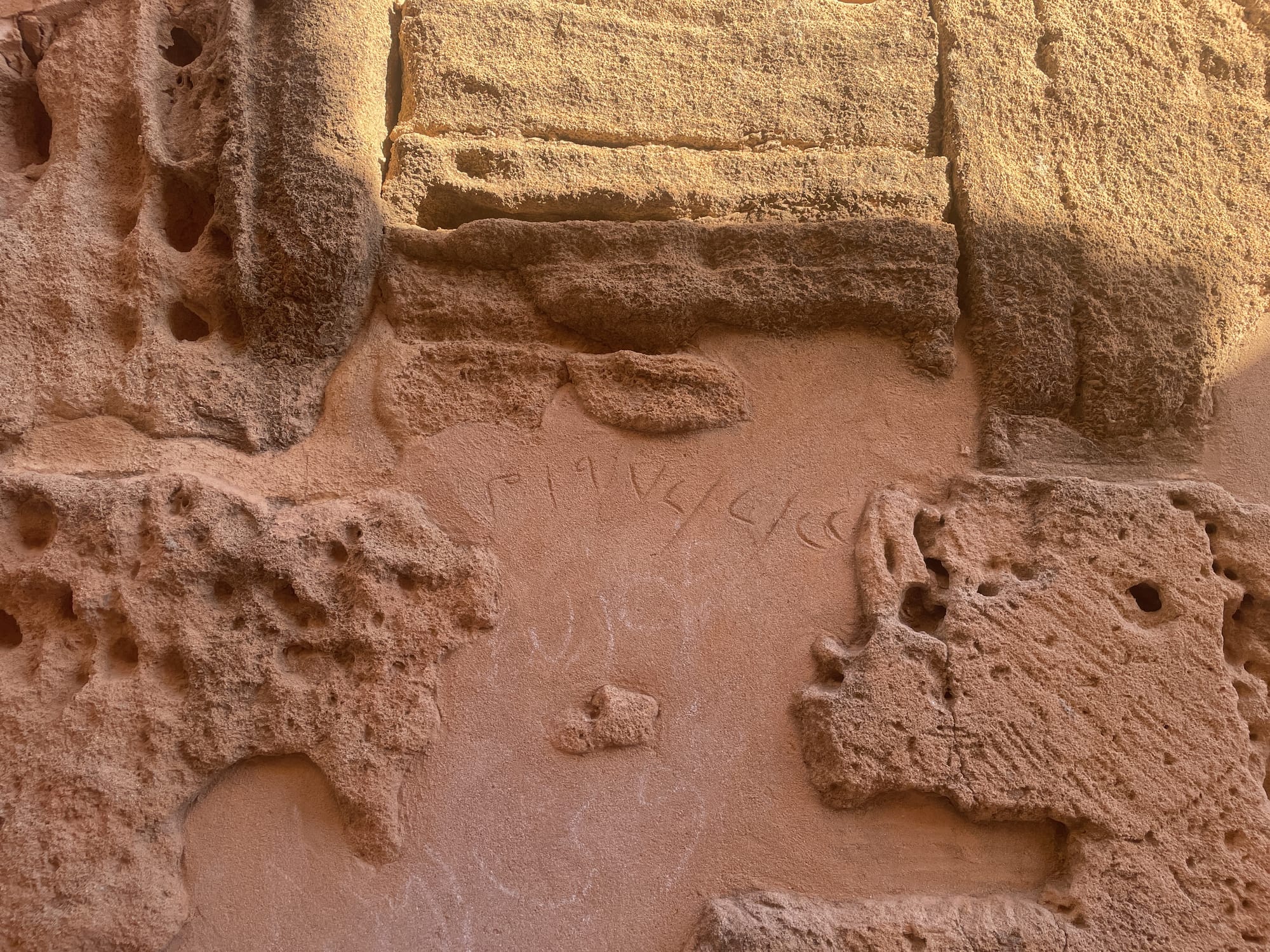
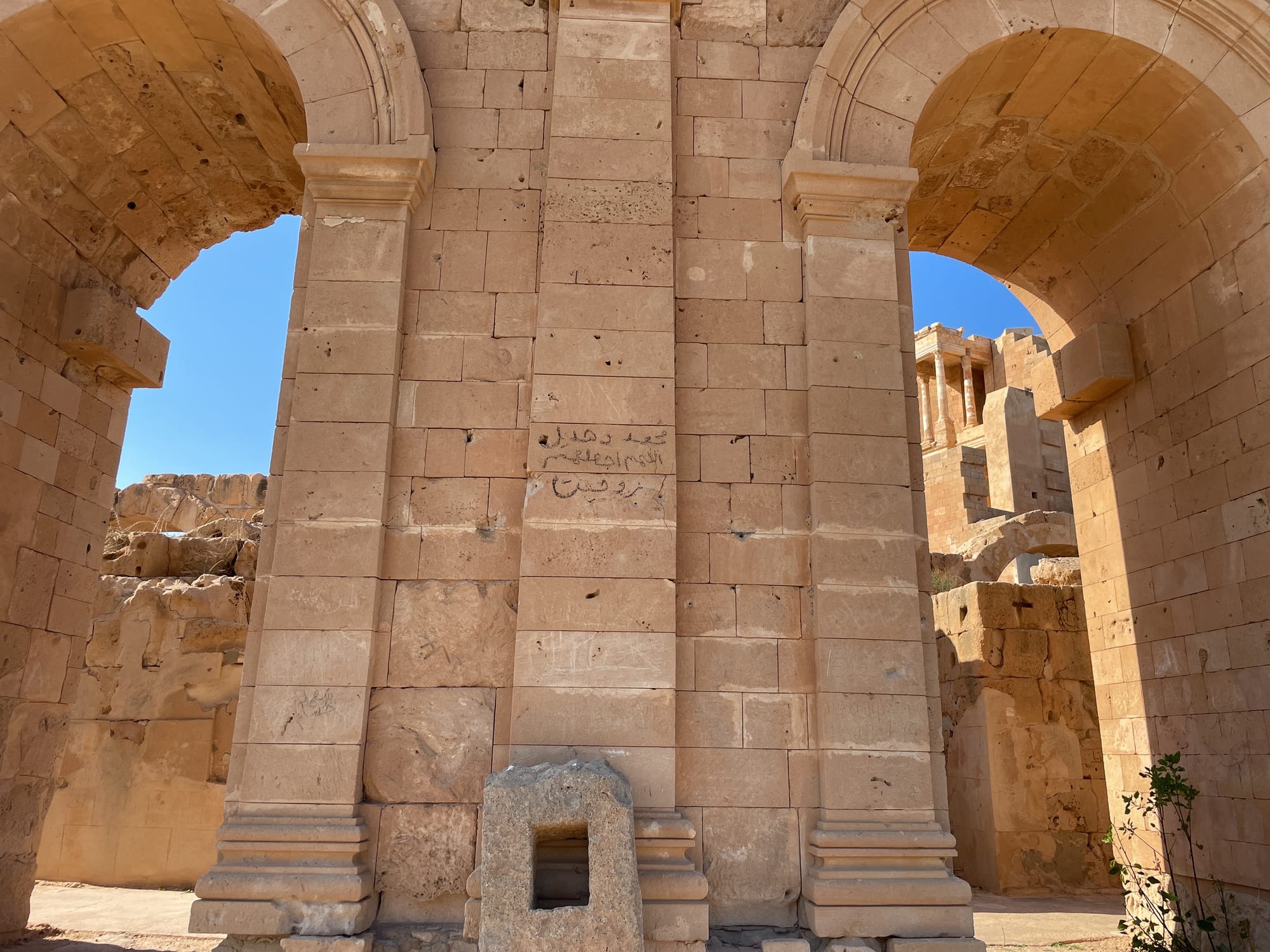
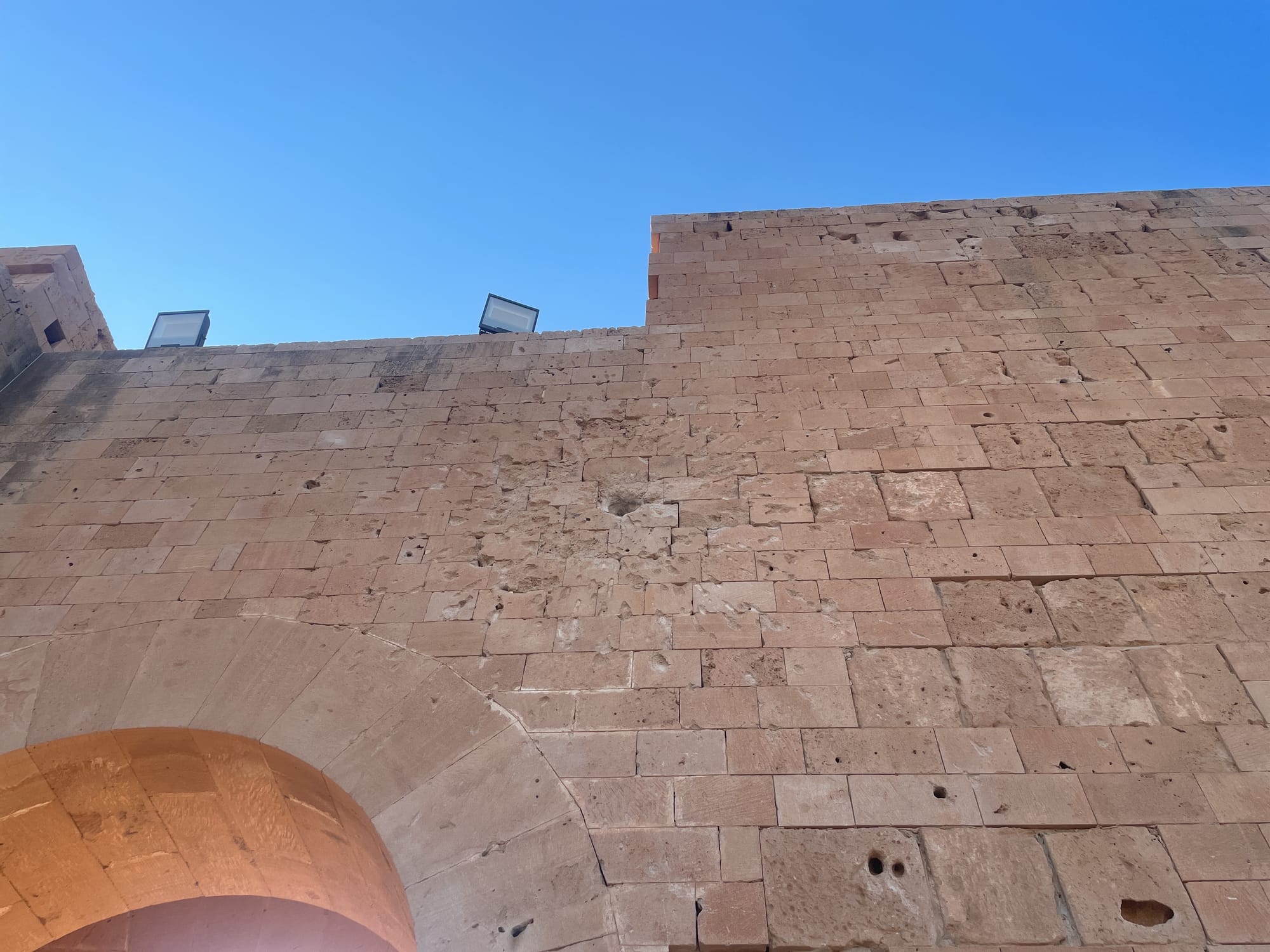
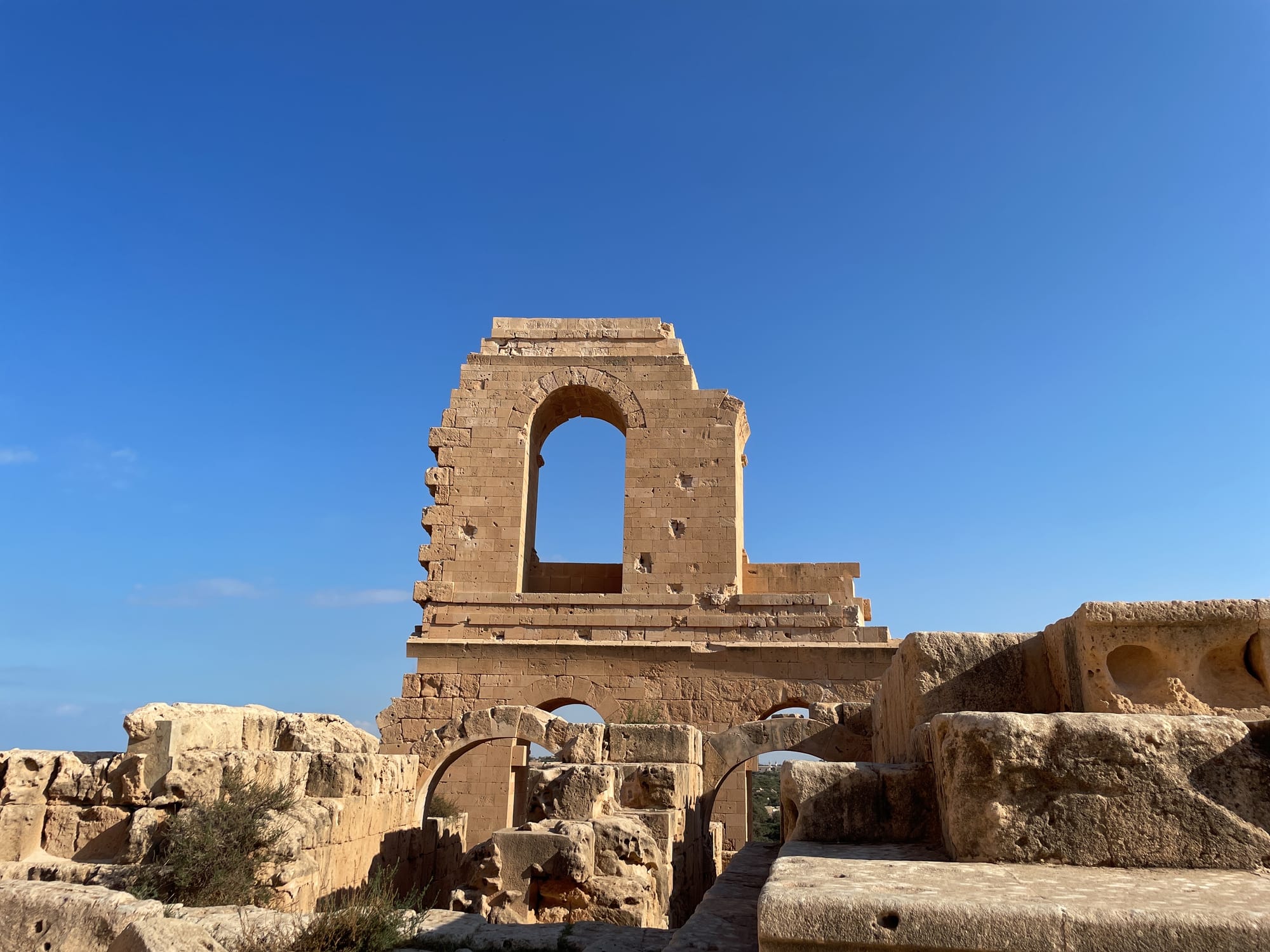
Sabratha, Libya - 01/31/2024 Photo by Radi Dhan
In 2016, clashes within and around the archaeological site destroyed parts of Sabratha’s invaluable cultural heritage. In addition to being damaged in the crossfire, human carvings are a recurring source of sabotage, not only here but at sites all across Libya.
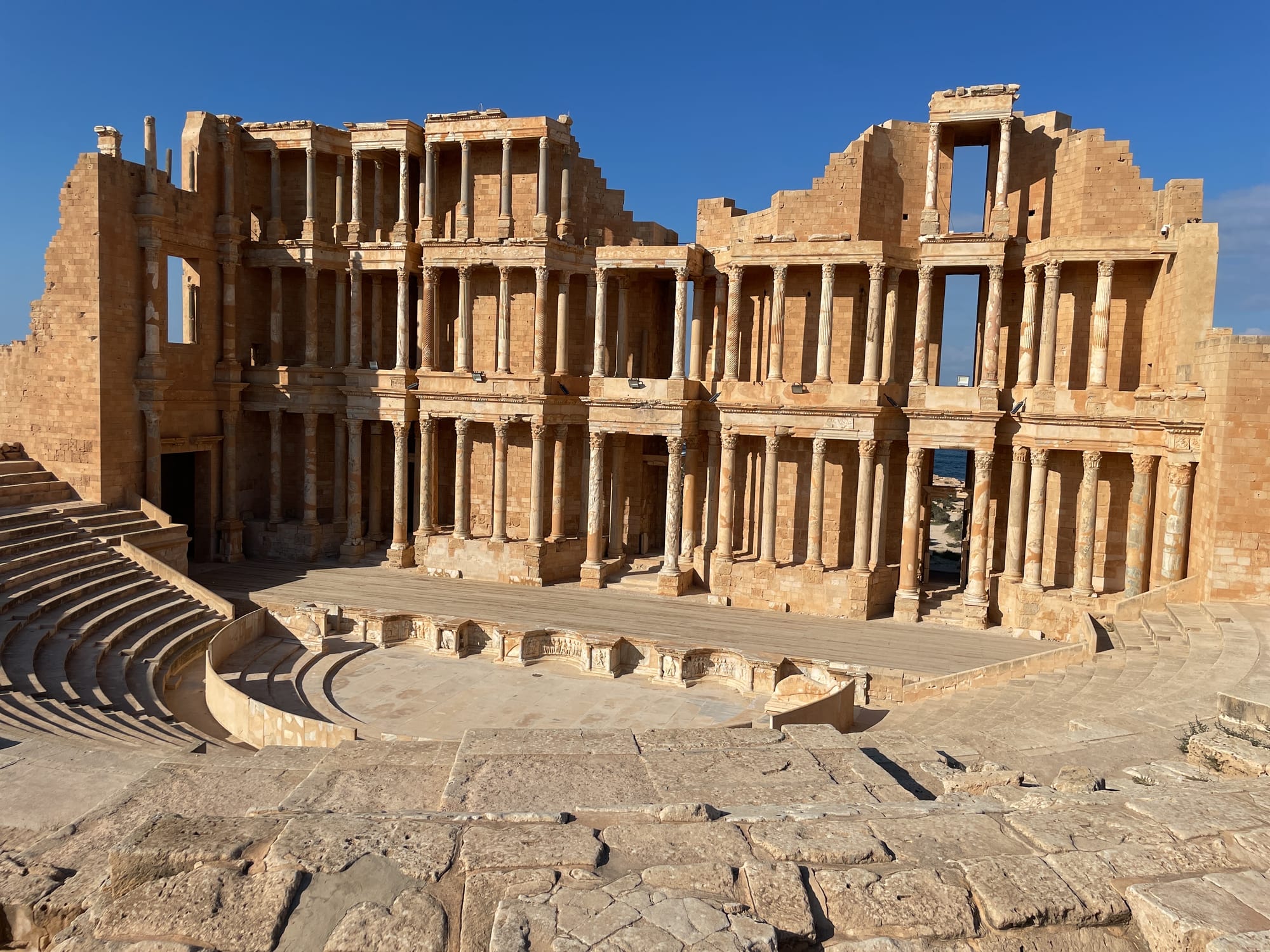
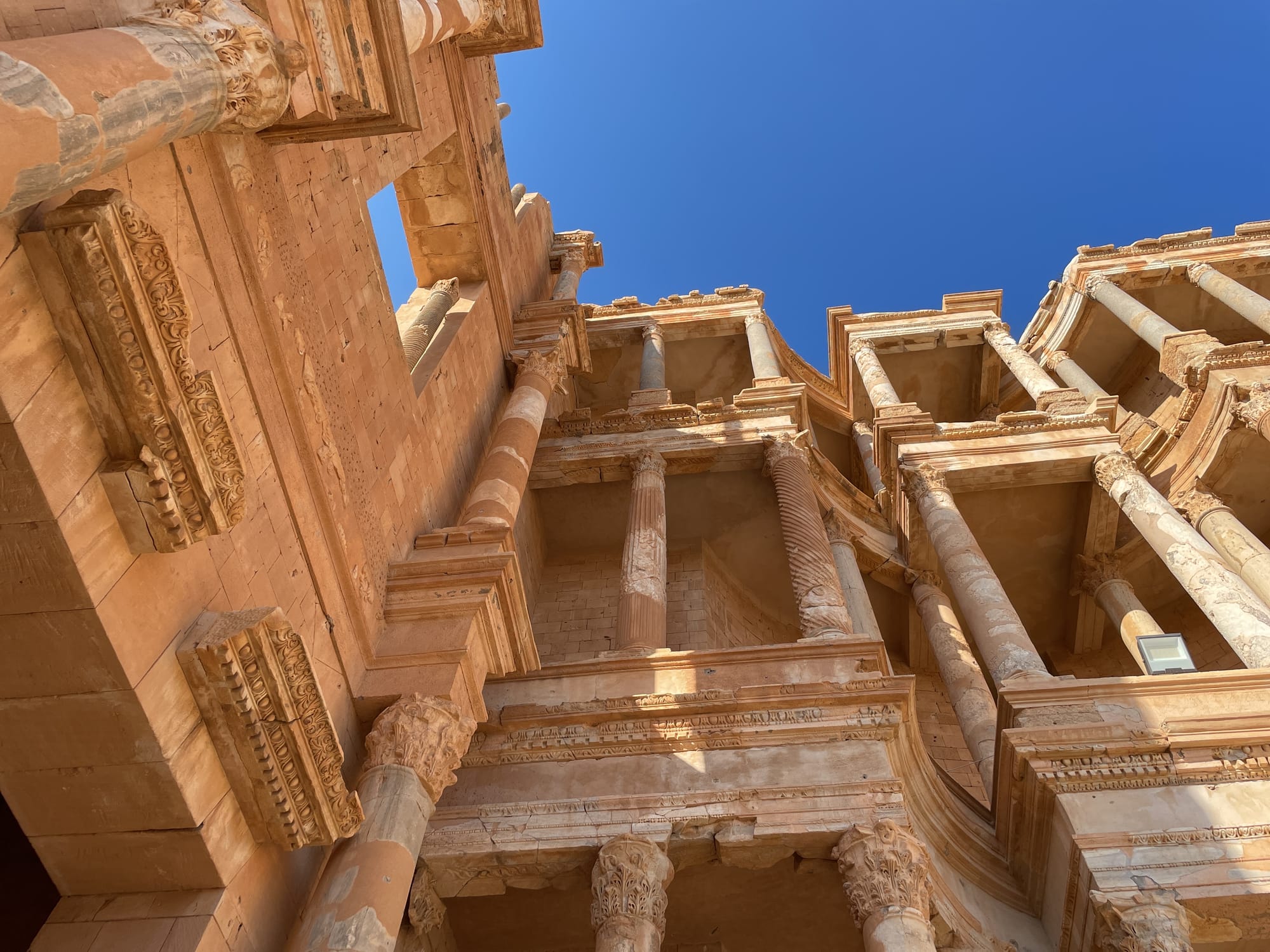
Sabratha, Libya - 01/31/2024 - Photo by Radi Dhan
The historic city of Sabratha experienced its greatest prosperity in the 2nd and 3rd centuries AD and many beautiful monuments were built during this period. Sabatha’s most famous monument is its theater, which had 25 entrances and could seat between 5200 and 6450 spectators. and it was used until an earthquake in AD 365.
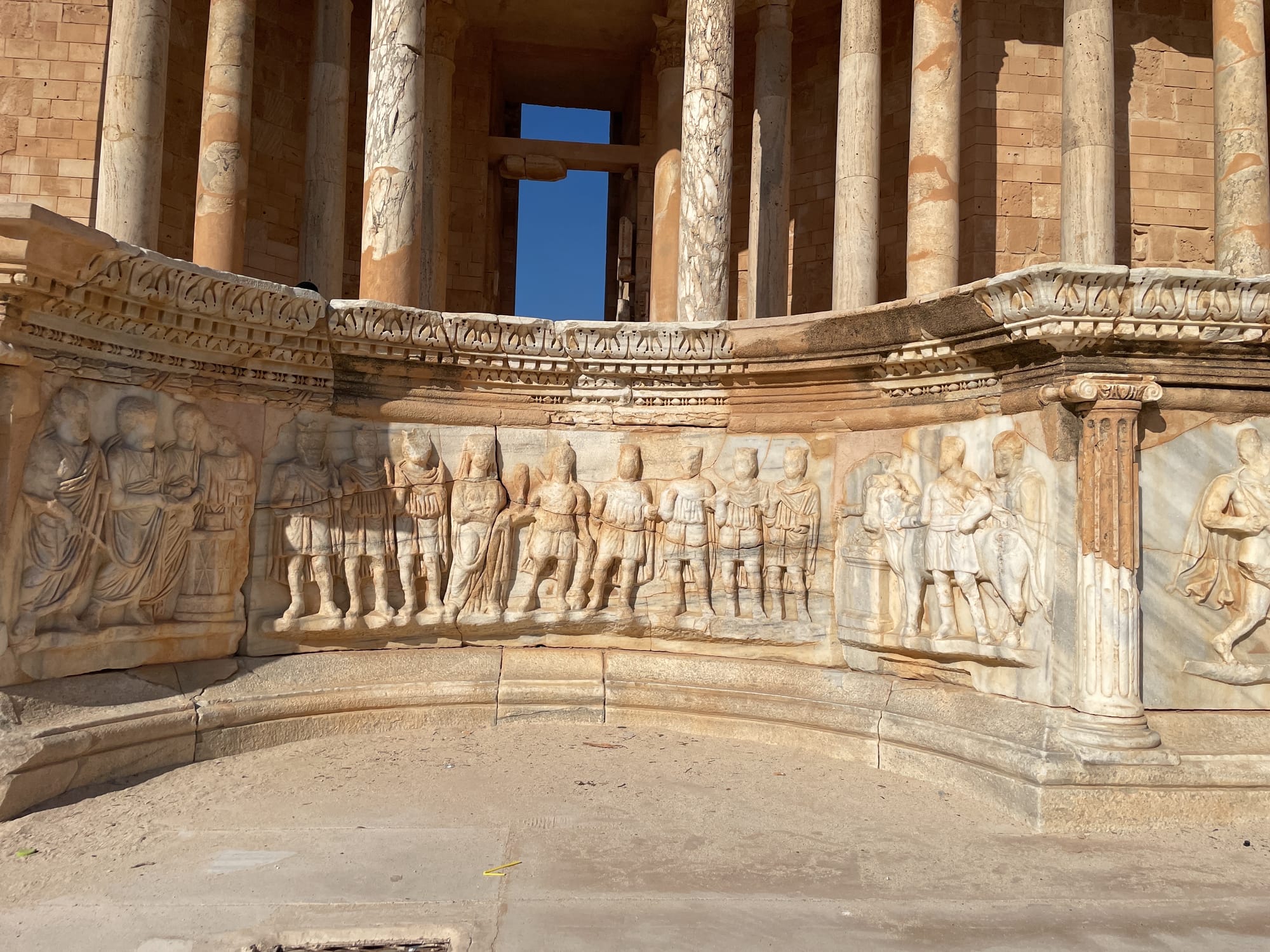
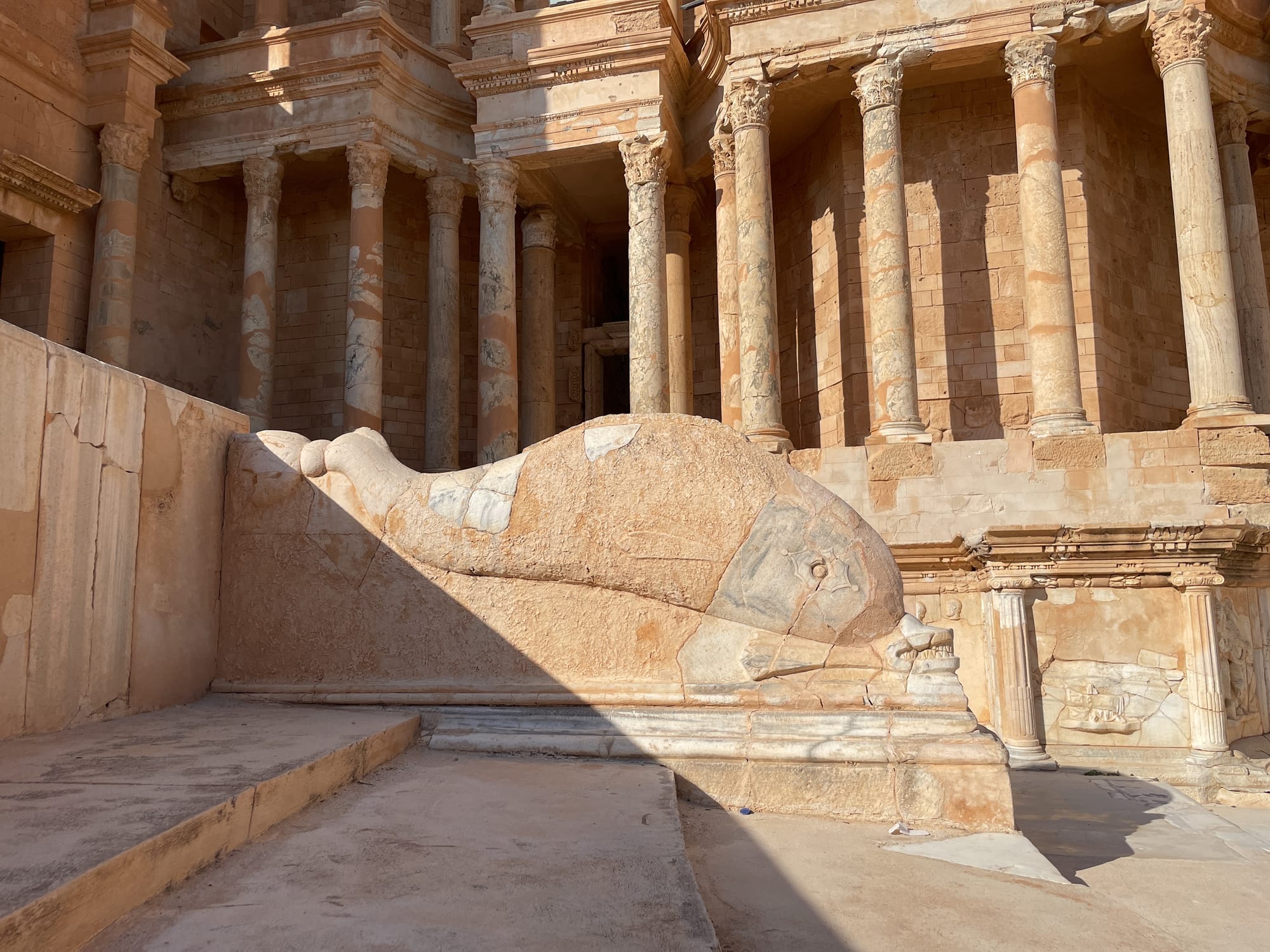
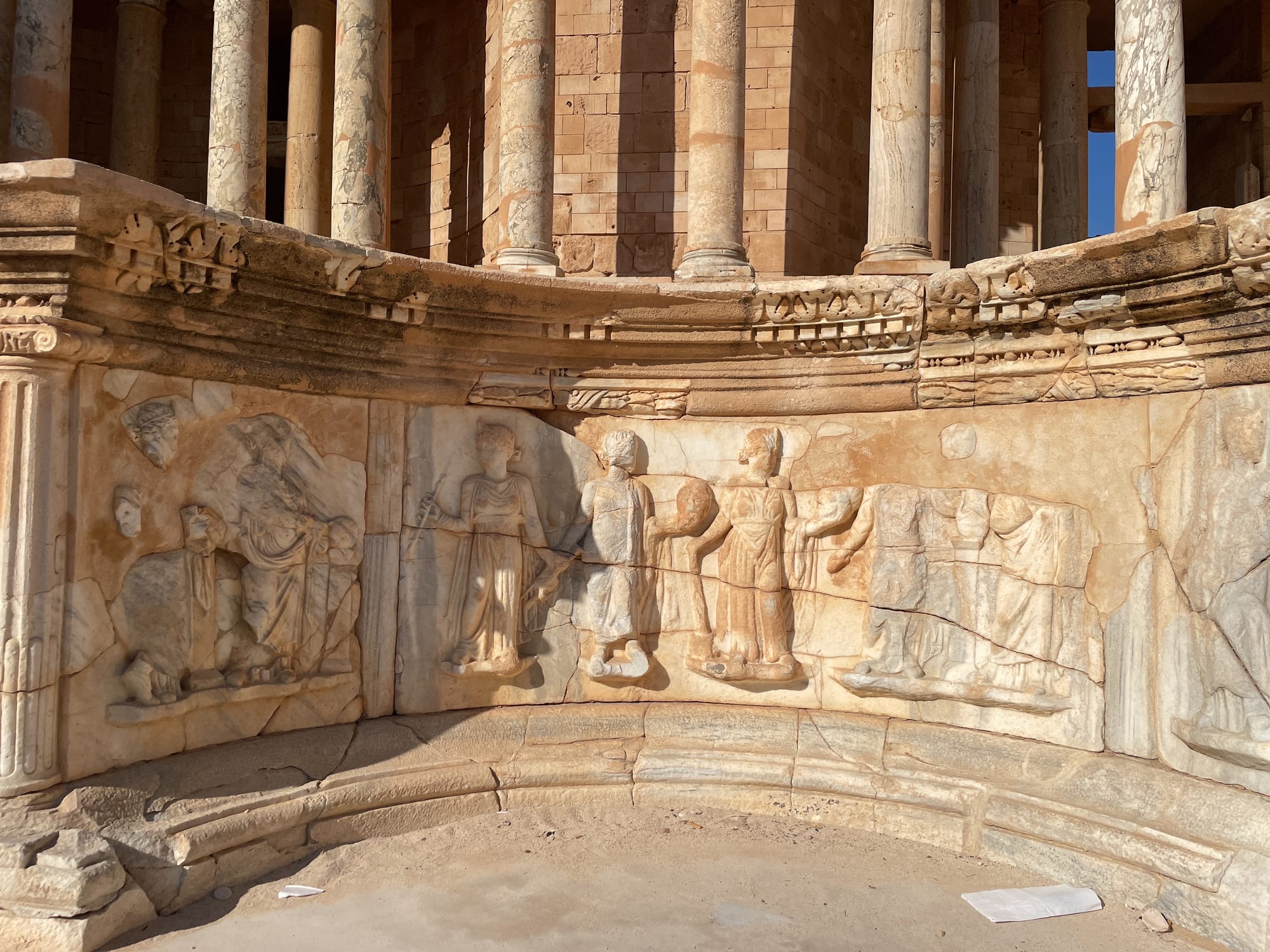
Sabratha, Libya - 01/31/2024 - Photo by Radi Dhan
(Left) A scene carved on the theater’s stage shows the personifications of Rome and Sabratha shaking hands while surrounded by two sacrificial scenes.
(Middle) Two parapets in the shape of large dolphins separate the seats and the stage.
(Right) The Muses are part of the Nine Muses of Greek Mythology, These Muses were daughters of Zeus and Mnemosyne, and they lived on Mount Helicon. They were considered deities that gave artists, philosophers, and individuals the necessary inspiration for creation.
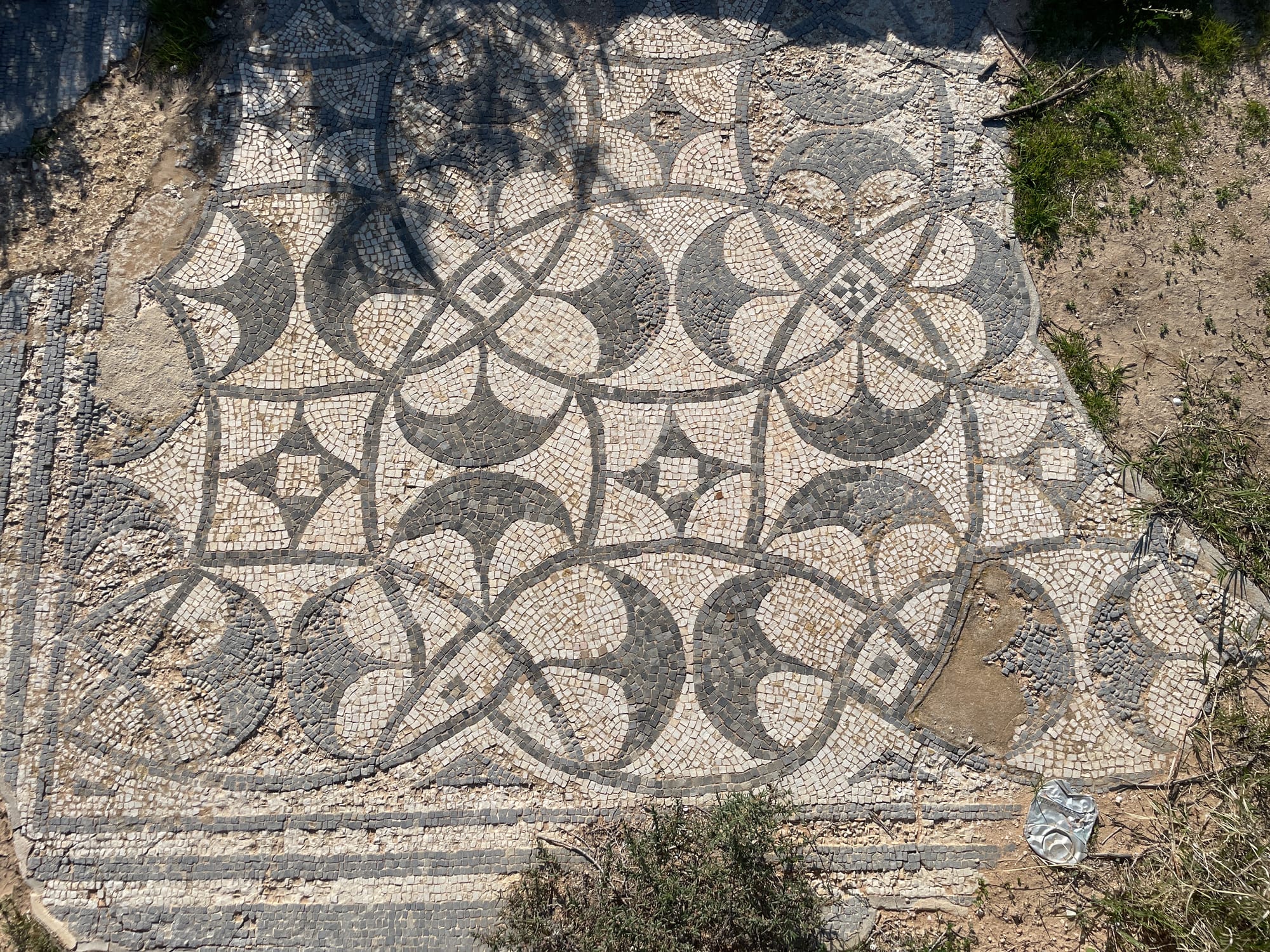
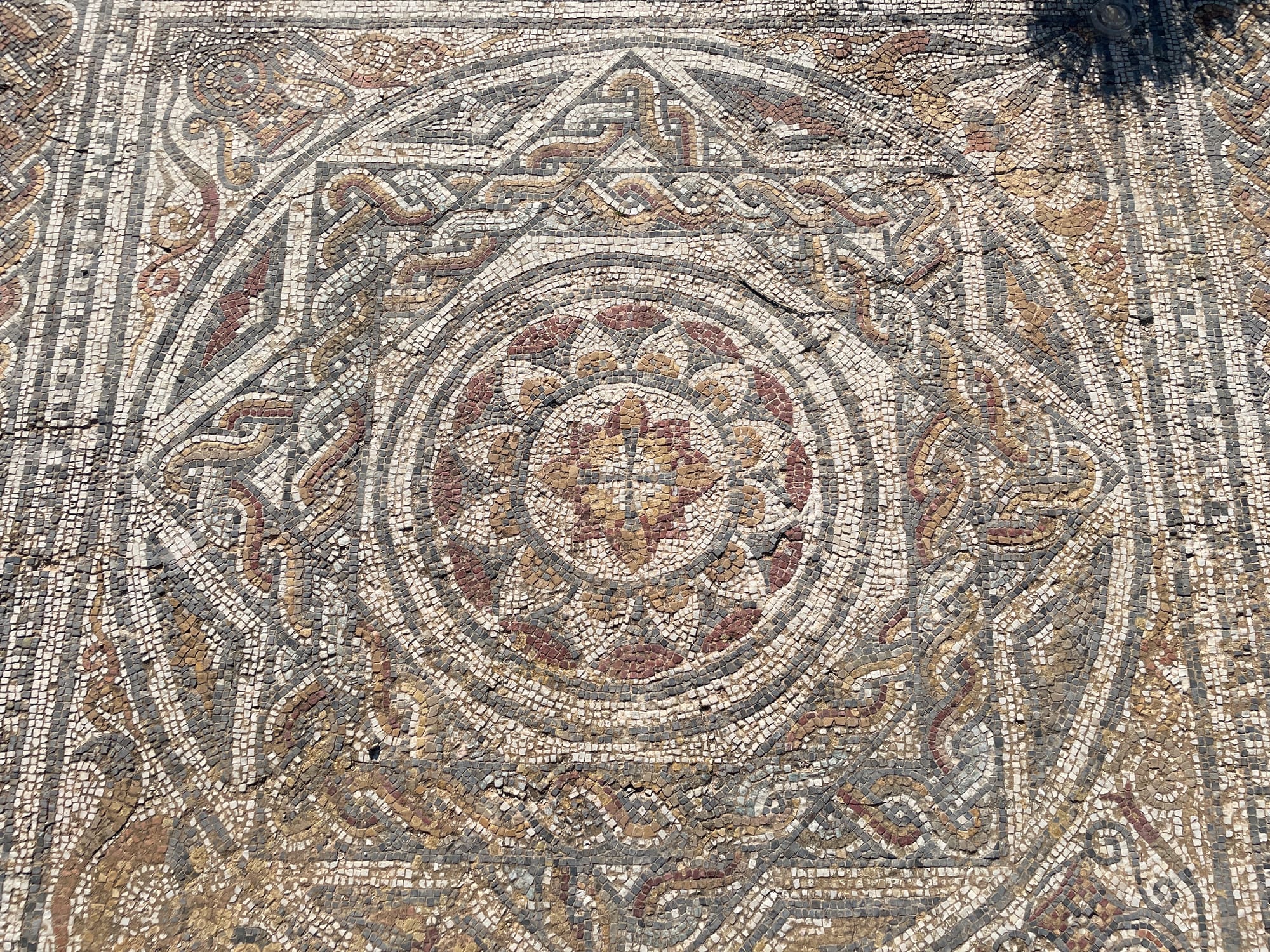
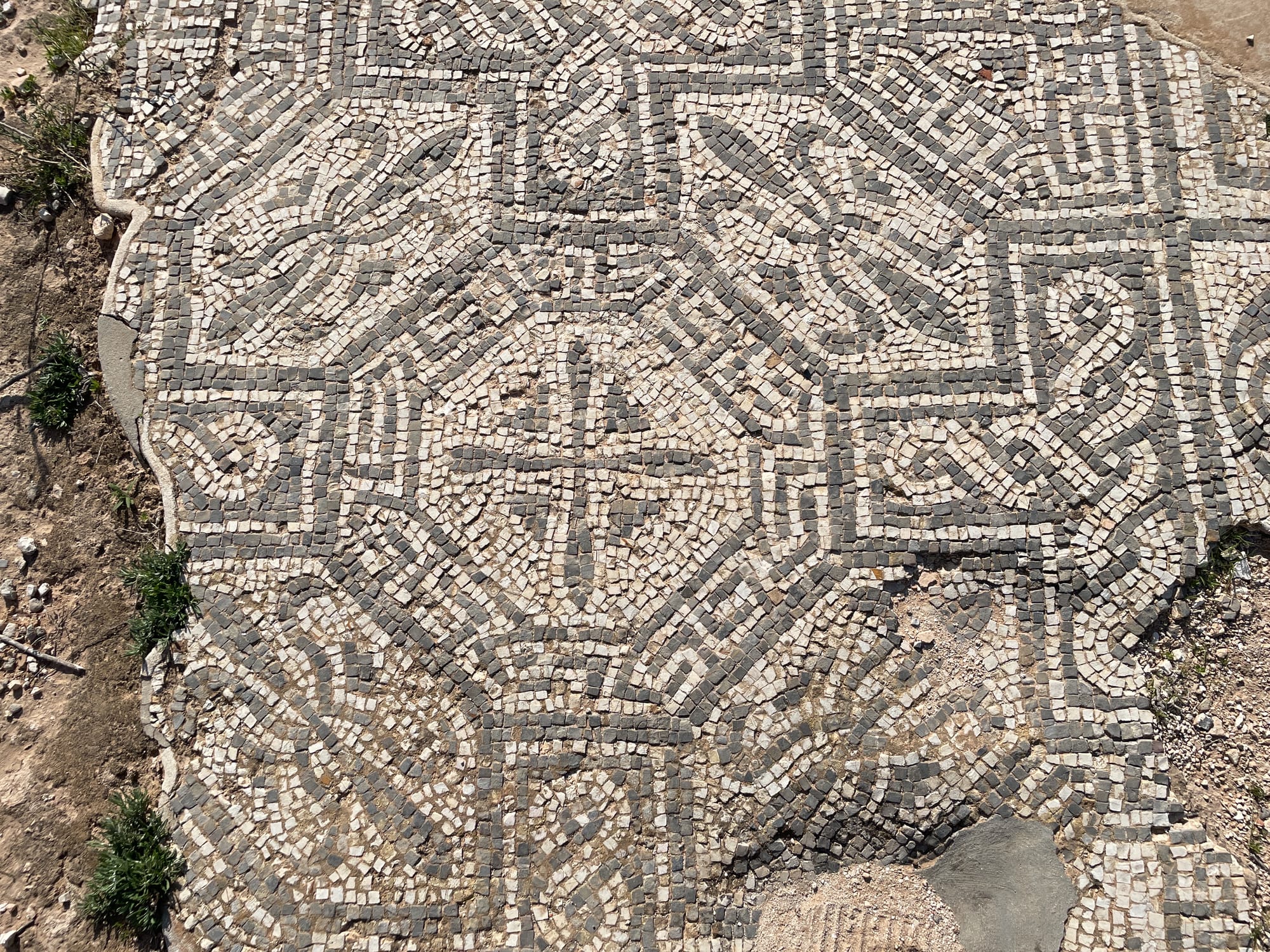
Sabratha, Libya - 01/31/2024 - Photo by Radi Dhan
Around the Theater floors are carved in mesmerizing patterns, however these mosaics are struggling to stay in contact due to climate and vegetation. What remains provide visitors a small taste of the ornate decorations common among the residences of the elites in Roman era North Africa.
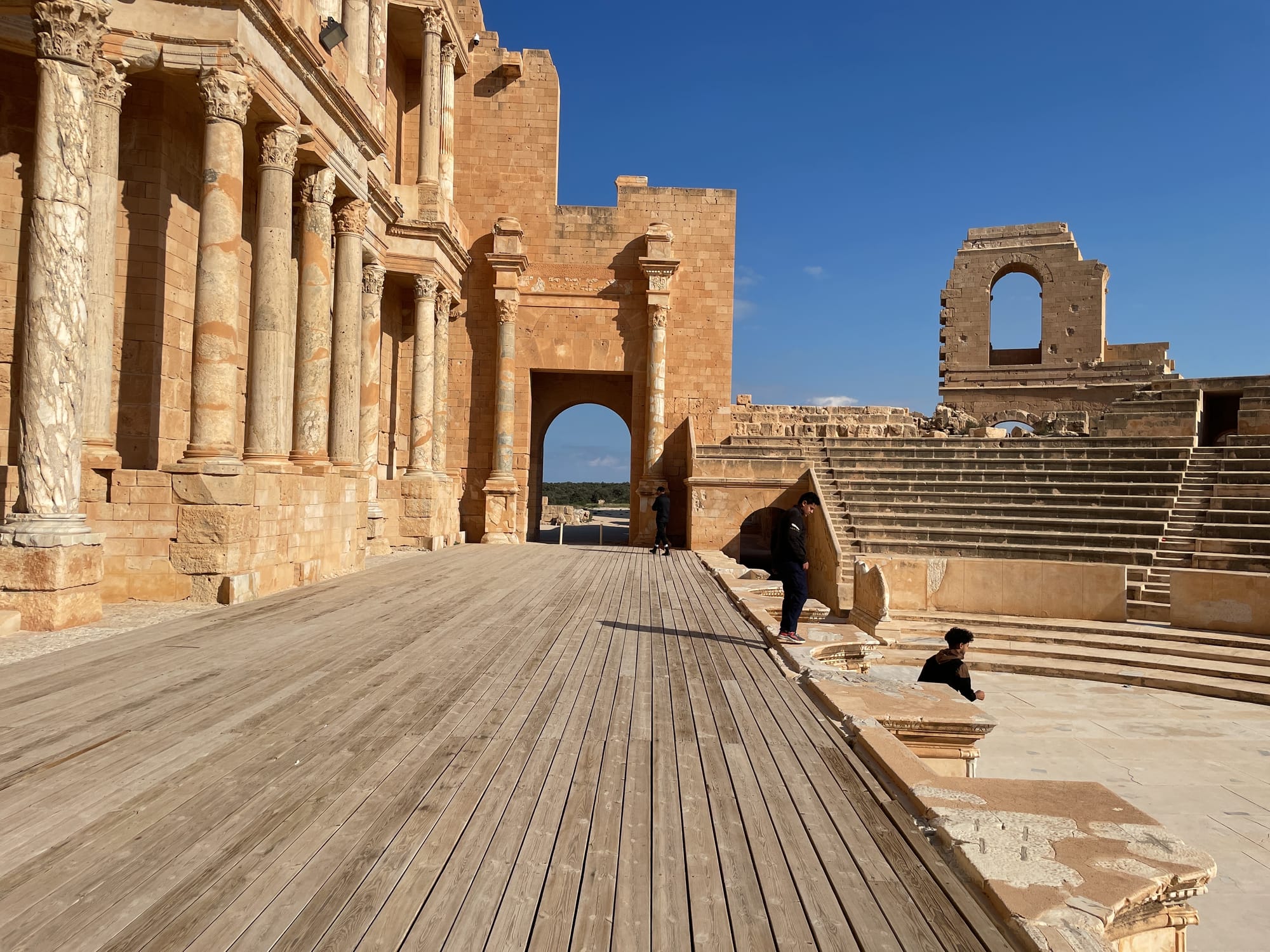
The theater has very few visitors daily, far less than the masses of visitors seen at the colosseum in Rome, or even the Roman Theatre of Carthage in what is now Tunisia. Libyan families visit from nearby cities to use the seaside to relax and have talks with their friends or family, some days there are also a few Algerian and Tunisian tourists are among the daily visitors.
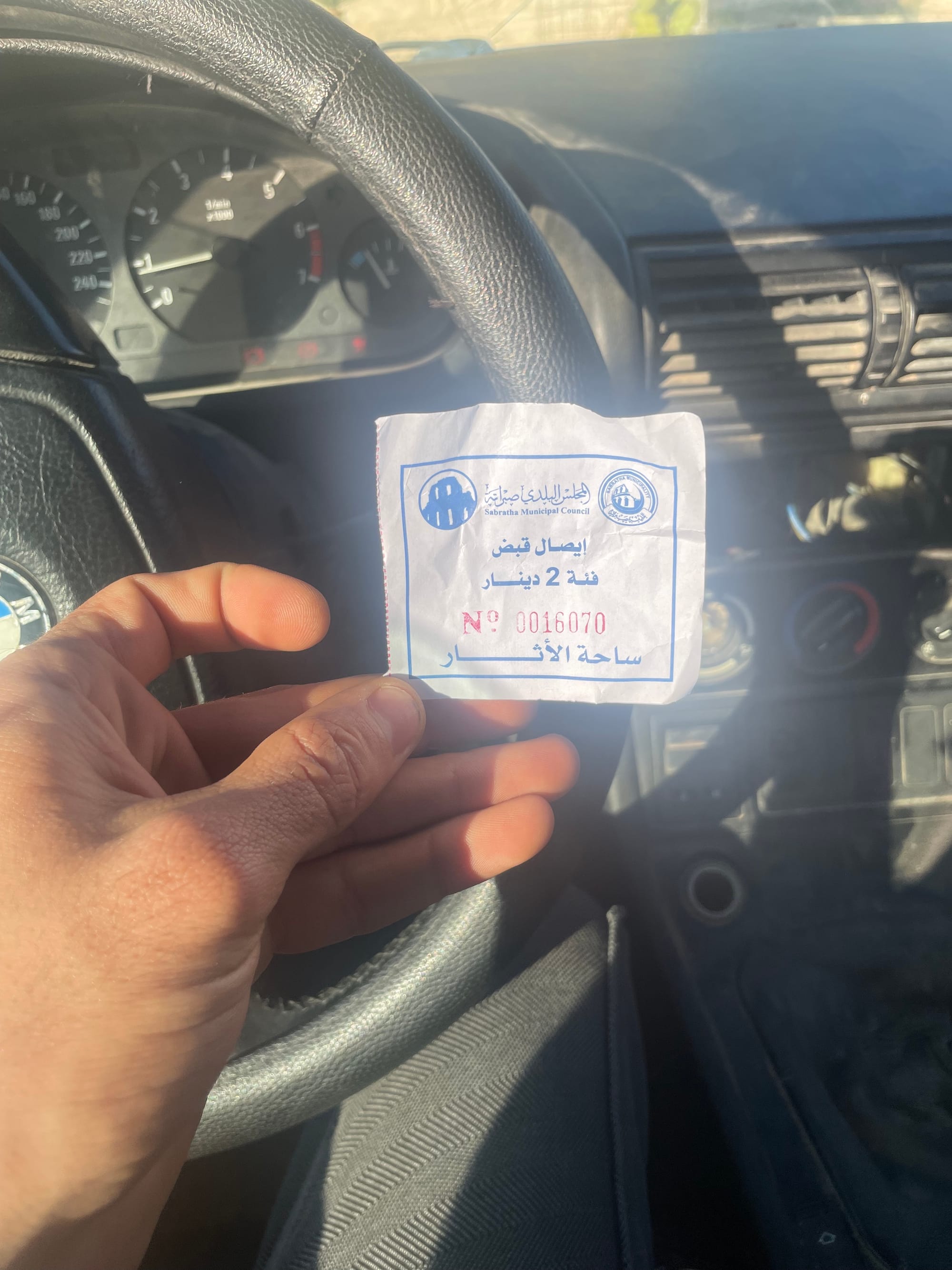
One notable observation was the cost to enter the historic city of Sabratha and the Roman Theater! Entry is for free for all individuals, and you pay 2 Libyan Dinars ~$0.40 (USD) to park your car. Given that cars are the main transport means in Libya, it’s fair to assume the income through parking tolls are limited.
